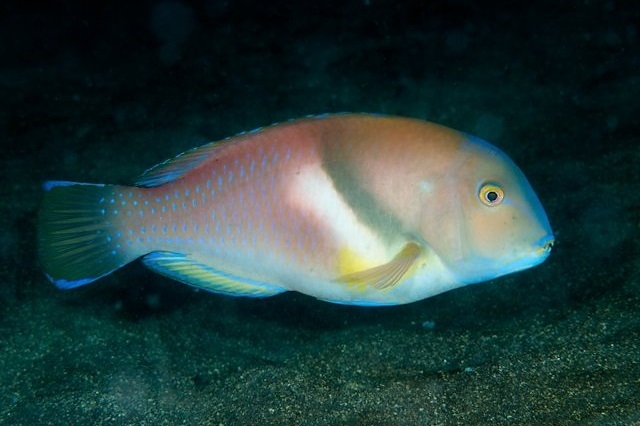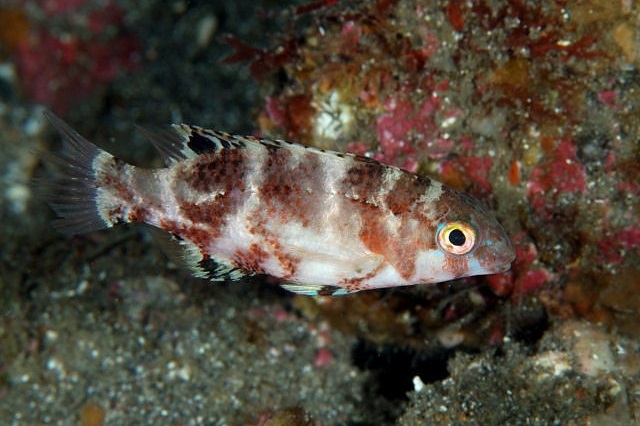Choerodon azurio
| Latin name | Choerodon azurio |
|---|---|
| Local name | Azurio tuskfish |
| Family | Labridae - Choerodon |
| Origin | Australia, Japan, Indonesia, New Zealand, Central/West Pacific |
| Max length | 40 cm (15.7") |
| Minimum volume |
1000 l (264 gal) |
|---|---|
| Hardiness |
Average |
| Suitable for aquarium |
Suitable with care |
| Reef safe |
Not reef safe |
| Aggressiveness | Might be aggressive towards other species |
| Recommended |
Larger crustaceans (Shrimp, crabs...) Other invertebrates Small crustaceans (Krill, mysis, artemia...) |
|---|
This species eats shrimps, crayfish, crabs, small bivalves, sea urchins, snails and similar.
There is little available knowledge of this species, so there can be important information missing on this page.
This species needs a very large aquarium when fully grown.
Exactly how big the aquarium should be is hard to say, but the size of this species is such, that it cannot normally be kept in a home aquarium.
These fish flourish better without other members of the same species in the aquarium.
This species has a habit of rearranging rocks and sand.
Make sure rocks are placed securely on the substrate, so they cannot toppled over.
This fish requires feeding several times a day, especially when newly added.
When the fish can find its natural food in the aquarium it requires less frequent feeding.
This species needs good hiding places, for example, between live rocks.
This species revels in swimming and requires an aquarium with ample space.
This species can be aggressive when kept together with fish that are very similar, or if they are not provided with adequate space.
This species can be very shy when first introduced into a new aquarium.
More aggressive fish can be introduced after this species has acclimatized.
Species in the genus Choerodon become quite large and require plenty of space, as they are very active and intelligent fish. Large individuals are known to spit water upwards from the tank, so site electrical instalations with care.
They can be fed with various kinds of seafood, frozen and dried foods. They should be given food several of times a day, as they are active fish.
They can be aggressive, but if one avoids introducing docile fish, or similar Wrasses afterwards, it should be fine. Large specimens will eat various crustaceans, snails, starfish and sea urchins if they are within reach. They will also move lose corals and stone about in their search for food.
Choerodon fasciatus are less likely to eat invertebrates and move stones and corals then the other species, they can -with care- be kept in a reef aquarium.
Wrasses are nearly always seen in reef aquaria, since many of the species are both attractive and useful in battling a range of unwanted invertebrates like i.e. flatworms, pyramide snails.
These fish live of everything from zooplankton to large crustaceans, sea urchins and the like.
The needs and behaviour of Wrasses vary greatly, so it is vital to familiarize oneself with the specific species before buying one.
Bob Fenner. Wrasses called Tuskfish, the Genus Choerodon - Wet Web Media - (English)
Gregory Schiemer. 2003. Aquarium Fish: The Harlequin Tuskfish (Choerodon fasciatus) - Advanced Aquarist - (English)
Scott W. Michael. 2009. Wrasses and Parrotfishes (Reef Fishes Series Book 5) - TFH Publications / Microcosm Ltd. - (English)




